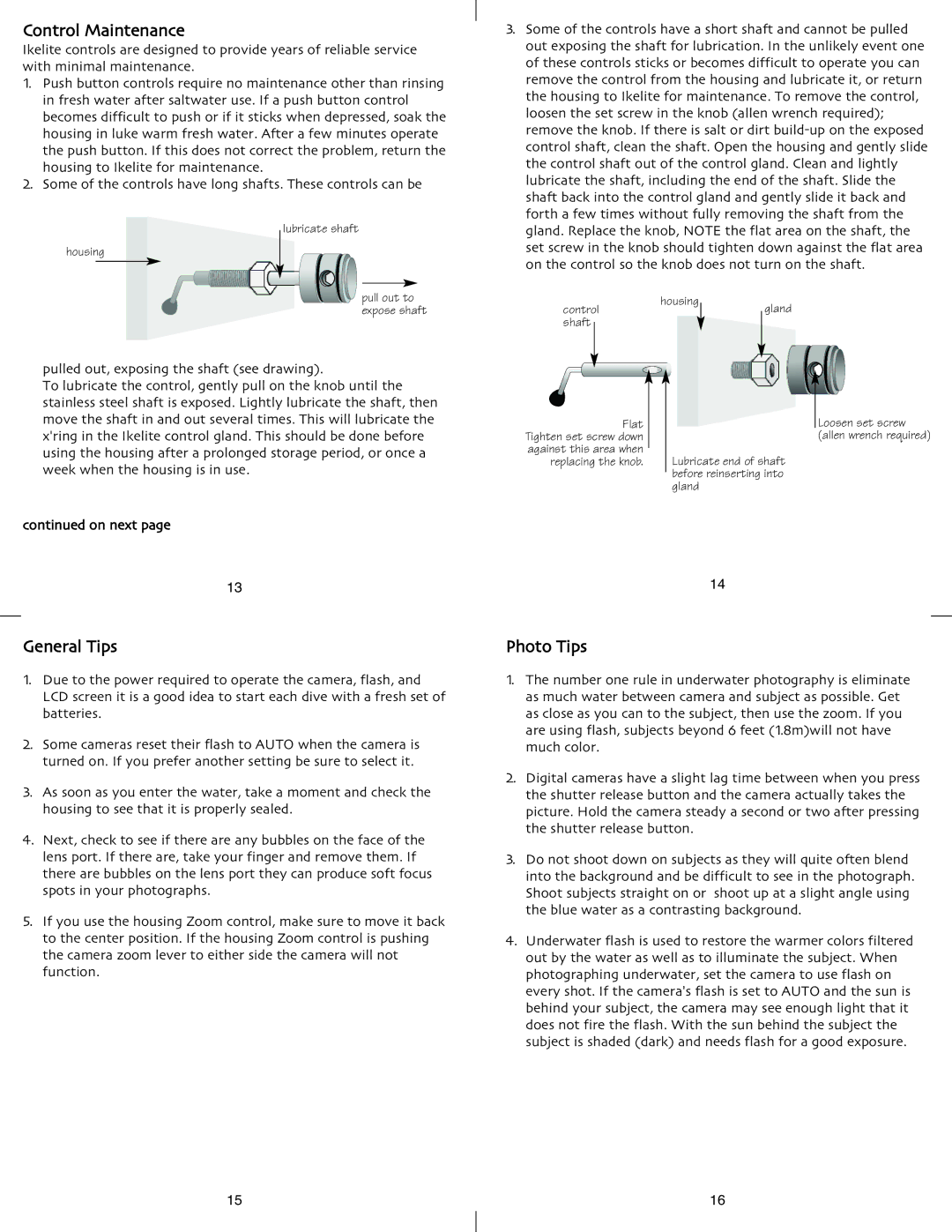SD-750 specifications
The Ikelite SD-750 is a compact underwater housing designed for the Canon PowerShot SD750 digital camera, transforming it into a robust tool for underwater photography. With its innovative design and technological features, this housing appeals to both novice and experienced divers who wish to capture stunning underwater images.One of the standout features of the Ikelite SD-750 is its durability. Constructed from high-quality acrylic and polycarbonate, the housing can withstand depths of up to 200 feet (60 meters). This feature makes it ideal for recreational diving, snorkeling, and even professional underwater photography. The housing is also designed to be lightweight, making it suitable for travel without sacrificing the protective capabilities.
The design of the Ikelite SD-750 offers easy access to all camera controls while allowing for intuitive operation. Luminous buttons and a clear back provide excellent visibility, even in low-light underwater environments. The ergonomic design ensures that divers can easily access the shutter, zoom, and mode buttons with precision.
The SD-750 housing is equipped with a port system that supports a variety of lenses and filters, expanding the creative potential for photographers. Users can attach wide-angle or macro lenses, enhancing image quality and allowing for unique perspectives. Moreover, the housing features two built-in fiber-optic ports for connecting external strobes, improving lighting and reducing shadows in underwater images.
One of the notable technologies incorporated in the Ikelite SD-750 is its housing’s ability to accommodate the camera's natural photo capabilities. The housing retains the Canon SD750's 7.1-megapixel sensor, ensuring photographers can capture high-resolution images and vibrant colors even at depth.
Another key characteristic of the Ikelite SD-750 is its user-friendly construction. The housing utilizes a reliable double O-ring seal system for waterproof integrity, providing peace of mind for users concerned about leaks. This feature is complemented by an easy-to-use latch system, allowing for efficient operation while ensuring the camera remains securely housed.
In summary, the Ikelite SD-750 serves as an excellent companion for underwater photography. With its robustness, accessibility, and adaptability to various photography needs, it caters to a range of underwater enthusiasts—from casual snorkelers to serious divers, enhancing their photographic experiences beneath the waves.

